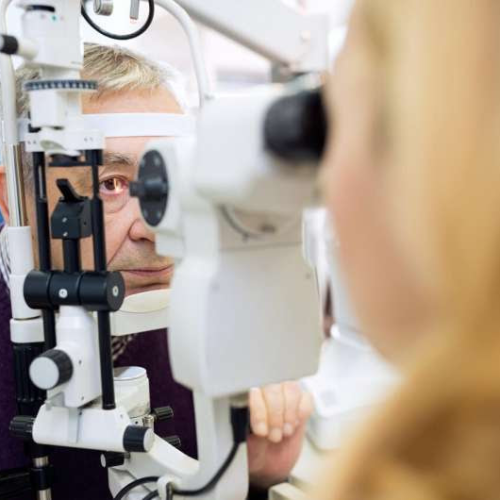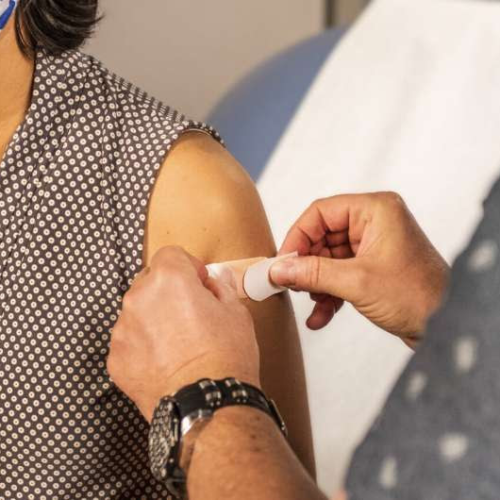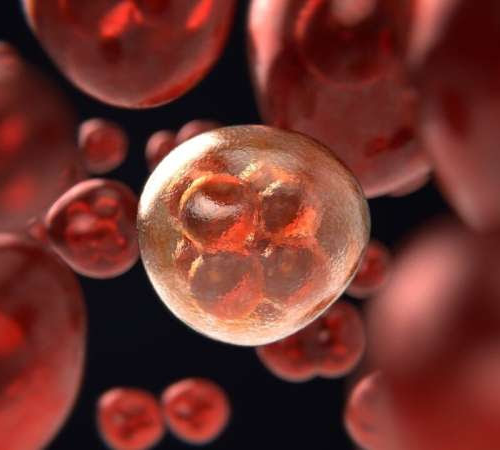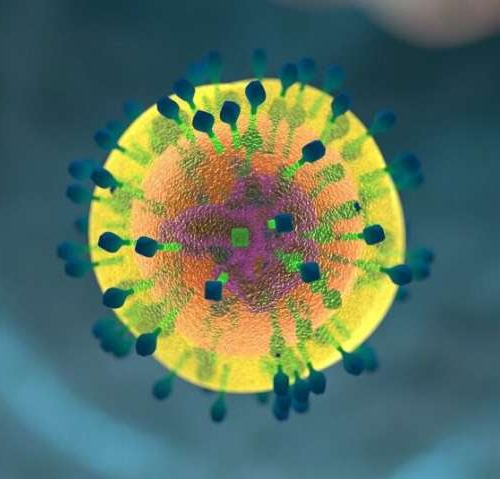by Optica Researchers have developed a new type of lens that uses a spiral-shaped surface to maintain a clear focus at different distances in varying light conditions. Credit: Laurent GalinierResearchers have developed a spiral-shaped lens that maintains clear focus at different distances in varying light conditions. The new lens works much like progressive lenses used for...
Year: <span>2024</span>
Bacteria’s natural self-destruct mechanism used to fight infections
By Paul McClure Researchers have harnessed a bacterial self-defense mechanism to fight infectionRechkoblit et al. A new study has demonstrated that a natural bacterial defense mechanism against invading viruses can be used as a weapon to combat bacterial infection. The finding opens the door to new anti-bacterial therapeutics, particularly important in the face of rising antibiotic...
Pharmacological inhibitor protects nerve cells in ALS disease
Heidelberg neurobiologists successfully test novel drug principle in a mouse model and in brain organoids of ALS patientsPeer-Reviewed Publication HEIDELBERG UNIVERSITY A new pharmacological inhibitor can intervene in a central cell death mechanism that is responsible for the death of motor neurons and hence important for the progression of the motor neuron disease amyotrophic lateral...
Diagnosed with macular degeneration? Here’s what you need to know
by Dennis Thompson Age-related macular degeneration can lead to vision loss in seniors, but new therapies have offered fresh hope for preserving eyesight later in life, eye experts say. These cutting-edge therapies benefit both the dry and wet types of age-related macular degeneration (AMD), says the American Society of Retina Specialists (ASRS). Eleven million people...
Vaccines may work better if arms are alternated for each shot
by Robin Foster Credit: Unsplash/CC0 Public DomainWhen getting vaccines, switching arms for each dose may produce greater immunity than having the jabs delivered into the same arm. That’s the finding from a new study in the Journal of Clinical Investigation that looked at the first two doses of COVID vaccines. Those who alternated arms showed...
Experimental compound extends life in amyotrophic lateral sclerosis mouse model
by UT Southwestern Medical Center MAP4K interactome and the effect on RANGAP1 subcellular distribution. A Western-blotting analysis of proteins after proximity labeling in ALS1-hiMNs at 10 dpi. B Venn diagram of proteins from two batches of samples analyzed by Mass Spectrometry. With a cutoff of 2.5-fold enrichment, 443 proteins were common to these two sets of data,...
Dietary supplements and protein powders a ‘wild west’ of unregulated products
by Emily Hemendinger and Katie Suleta, The Conversation Credit: Pixabay/CC0 Public DomainDietary supplements are a big business. The industry made almost US$39 billion in revenue in 2022, and with very little regulation and oversight, it stands to keep growing. The marketing of dietary supplements has been quite effective, with 77% of Americans reporting feeling that the...
Baseline findings among hospitalized mucormycosis patients: A multicentric ambispective cohort study in India
by Tsinghua University Press Directed acyclic graph demonstrating the relationship between potential risk factors of mortality due to mucormycosis. Credit: Dr. Rizwan Suliankatchi Abdulkader, Indian Council of Medical ResearchMucormycosis is a relatively rare but serious fungal infection increasingly recognized for its poor prognosis and high mortality. Due to the COVID-19 pandemic, the incidence of mucormycosis...
A breast cancer drug, susceptible to resistance, can be restored to effectiveness, researchers demonstrate
by Leslie Cantu, Medical University of South Carolina Credit: Pixabay/CC0 Public Domain In a new paper published in Cancer Research, researchers at MUSC Hollings Cancer Center have shown that targeting a protein called TACC3 (transforming acidic coiled-coil containing protein 3) can restore the effectiveness of the breast cancer drug T-DM1 if the cancer cells have developed...
New technique could make human T cells 100 times more potent at killing cancer cells
by Northwestern University Credit: Pixabay/CC0 Public DomainScientists at the UC San Francisco (UCSF) and Northwestern Medicine may have found a way around the limitations of engineered T cells by borrowing a few tricks from cancer itself. By studying mutations in malignant T cells that cause lymphoma, they zeroed in on one that imparted exceptional potency to...







